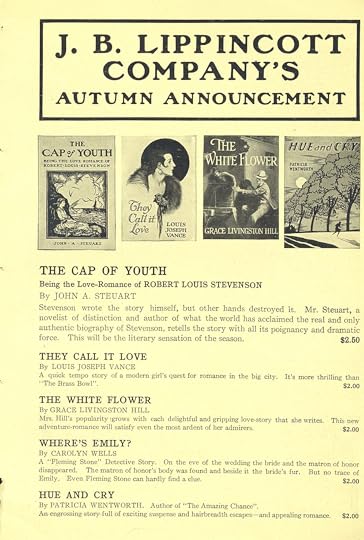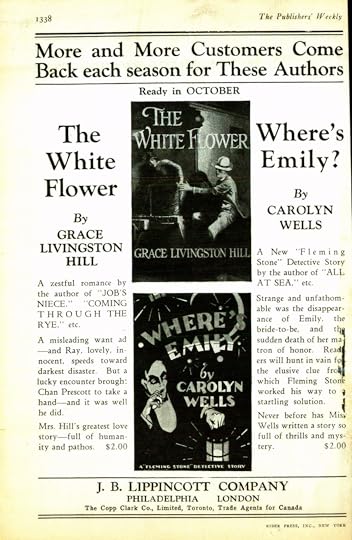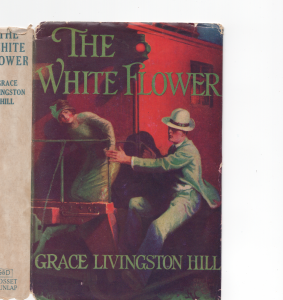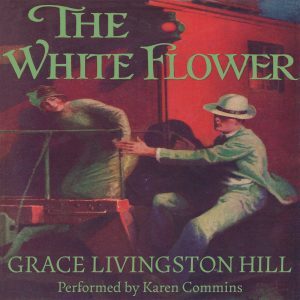Karen Commins's Blog
August 6, 2025
PANAcon Session and Q&A on Self-Producing Your Work
I’ve been a proud member of the Professional Audiobook Narrators Association (PANA) since its inception. The organization offered its first convention PANAcon last month.
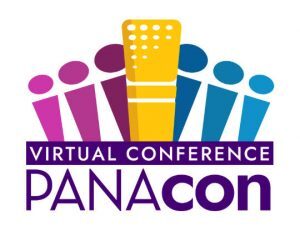
When I was asked earlier this year to speak at the first PANAcon on a panel about self-producing your work, I couldn’t say “yes!” fast enough!
If you attended, you should have received an email with links to the videos from all of the sessions. Download all the videos now because they won’t be available after 1 September.
This article and its resources should benefit attendees and non-attendees alike.
The PanelI was delighted to join and learn from my co-panelists and multi-talented narrators Shiromi Arserio, Tanya Eby, and Cassandra Medcalf as they shared their knowledge and experience in writing, publishing, and marketing their books. I talked about creating and publishing audiobooks from Public Domain texts. Thanks also to narrator Kelly Wilkinson for facilitating our session, the audience members who spent time with us and asked wonderful questions, and to all the volunteers who planned, coordinated, and made PANAcon such a fantastic success.
As panel moderator, Shiromi asked very thought-provoking questions, a few of which I’d like to share here.
What was the most unexpected challenge or most pleasant surprise you encountered when you decided to release your own audiobooks?
I published my first title, a Public Domain book, in 2014. I didn’t know then how that action would completely open up and enrich my life!
Public Domain books have become my passion and a cornerstone of my work. I’ve taught other narrators about finding PD books they love and distributing the finished audiobook.
My ever-deepening interest in copyright led me to apply for and then enroll in the CopyrightX program at Harvard University.
After publishing that first book, I combined 2 Public Domain books into a new book. It remains one of my favorite projects: Bly vs Bisland: Beating Phileas Fogg in a Race Around the World.
I’m currently working on perhaps the most electrifying professional undertaking of my life, which started as an idea to record a single Public Domain book. I discovered more books on the subject and thought I’d create a mash-up of multiple PD books similar to Bly vs Bisland.
This new topic has evolved into a fascinating multi-year historical research adventure for a new book I’m creating that I’ll produce as a full cast audiobook! It will be a celebration of Public Domain texts and fabulous audiobook narrators!
I’ve always admired biographers and historians who weave together a wide range of disparate facts and sources into a compelling story. It’s thrilling to be on that path!
I love and am absorbed in my daily research! It’s terribly exciting to discover hidden gems that the (many, many!) others who dived in this ocean of material completely missed. I’m planning a research trip in the coming months.
The biggest joy of the whole thing is going from idea to implementation — to take something that I had as an idea and work at it to make it appear in tangible form. That’s what makes us artists and what makes self-producing worthwhile.
And I have to say, not spending my time constantly writing to people and saying, “please hire me, please hire me” is huge for me! I’m generating my own work and totally in my own lane here. You can’t put a price tag on that.
I’ve done a handful of public domain titles, and it’s usually just what seems like a fun book that I wish people would cast me for. But you’re much more strategic about how you pick titles. Did you want to talk about that?
First of all, know that an incredible trove of books are in the Public Domain that you would not expect to be there. Most people seem to think Public Domain books are 100 years old and overflowing with very florid Victorian language.
That’s not true! In fact, the juiciest Public Domain titles were published in mid-century 1900s. At that time, the copyright had to be renewed, and a lot of people didn’t do that. In fact, between 1930 and 1963, about 74% of the books published in the US are Public Domain! The copyright has expired, so anybody can do anything they want to with them.
Whenever I see or hear about a book that piques my interest, the first thing I do is check out its copyright status. Is it in the Public Domain, or did the author or publisher renew the copyright?
A lot of people ask me for help finding a book, and the first things I ask them are:
What do you like to read?What kind of books do you like?Which genres do you work in, and which do you want to work in?You’re going to spend time with this book, and you may or may not make any money on it. You might as well do something that you really like that looks good for your portfolio.
Remember I said the key publication dates range between 1930 to 1963. The earliest age of a Public Domain book is 62 years old, meaning it’s stood the test of time. If a book has a lot of ratings and reviews and continues to be of interest, then it’s probably going to make money.
Books published in the US in 1930 will all become Public Domain on January 1st. It’s not too soon to find one, record it, and have it ready to publish in the new year!
Goodreads maintains lists of books that are popular for a given year. You can review their list of books from 1930 to find one that speaks to you as an artist. The books that appear high on the list usually include big sellers in literary history that we always hear about. They attract a lot of attention with many people, including big audio publishers, who are eager to record them. Further down that list, though, you’ll find books that are still interesting, that people are still reading and writing reviews about on Goodreads. I think that list is a really good place to start.
As someone who produces their own audiobooks, you have to handle the distribution, the marketing, the cover art, the writing. How are you able to manage your time?
I take an incremental approach, and I create a to do list every day in Evernote of three things:
Most important task of the day — If this was the only thing you did today, you’d be satisfied. (1 task)Secondary tasks of importance — Completion of these tasks will make the day even better. (2 tasks, though I often add more)This article details my use of Evernote and links to the templates of my daily and monthly action plans.
Almost every day, I list 2, 30-minute activities: research on my book, and content creation. For instance, it might take me several days to write an article like this one if I’m just doing a little bit at a stretch.
I’m not saying I always accomplish everything — or even anything — on my daily list!
I take you behind the scenes of my process and offer 9 ways I’ve increased my output in my article How I Get Stuff Done.
In terms of marketing my own books, I’m a firm believer in having a promotions calendar. Look for things in and associated with the book that give you reasons to talk about it long after its release date.
I mentioned Bly vs Bisland earlier. Two female reporters, Nellie Bly and Elizabeth Bisland, each went on a solo trip around the world that started in November 1889. I can promote that audiobook:
every October 2nd because that’s the date Jules Verne’s imaginary character Phileas Fogg made a wager that he could go around the world in 80 daysevery November 14th when the race startsevery December 21st as that’s the date Phileas Fogg won his betevery January 25th on the anniversary of the end of the reporters’ raceNellie Bly’s and Elizabeth Bisland’s birthdays and dates of deathif their name comes up in the news or I create some other reason. For instance, I’ve talked about it being a good book to listen to on a winter trip!I might only promote that book a couple times a year, but I love having options!
At least enter basic dates on your promotion calendar and add a reminder a week before the date. Once you develop assets of marketing pieces, you can just pop them back out on social media again. Nobody knows or cares that this is the same thing that you used the last three years on the same day! Just keep utilizing and repurposing the things you have. You don’t always have to create something new.
My Audiobook Marketing Cheat Sheet gives you a bounty of tips and tactics you could employ to market your book.
Audience Q&A
How do you determine if a mid 1900’s book is in the PD?
You have to research the copyright date. See Step 1 of my article Planning Your Trip to Public Domain World.
Can you take a public domain book and make it more of a modern story?
Absolutely! If you want a great example, look no further than WICKED! Gregory Maguire imagined new stories for the beloved Wizard of Oz characters because they were in the Public Domain. He wrote a book, which became a bestseller. He then licensed the rights — making even more money for himself! — for a musical and movies, plus all the merchandise!
Would you ever write and record an introduction to a public domain book, for example as a way to address problematic language that you want/need to keep in? Or would you just put the disclaimer in the written description?
Public Domain means you, as the producer, can create the audiobook any way you want. If you want to change the language, change it. If you want to delete sentences, paragraphs, or pages, delete them.
I look at each book on a case-by-case book and decide whether I’d add a disclaimer to the book’s description. For something like Huckleberry Finn, I’m not going to change the language. I would add a disclaimer in my book’s printed description and say this language reflected the time that it was written, viewpoints have obviously changed for the better since then, and be aware you’re going to hear objectionable language.
I haven’t included a disclaimer in the recording, but there’s no reason you couldn’t do so.
Disclaimer examples are in Step 6 of my article Planning Your Trip to Public Domain World.
Do you make an e-book of a public domain book you’re making an audiobook of?
I only need an ebook if I want to claim the title on ACX. If I’m going through another distributor, I don’t need an e-book. More information is in Step 2 of my article Planning Your Trip to Public Domain World.
If you work with a person who has already released the e-book on Amazon, how do you handle the royalty share percentage on Audible?
Ebook and audiobook royalties are 2 different things. If the rights holders of the Amazon edition and audiobook are different, they don’t share in each others’ royalties.
Once you produce a PD book, how then do you distribute it?
You have to make this decision for each book. I have a distributor comparison chart for members of NarratorsRoadmap.com, where I look at 22 criteria for 6 distributors. Not only are the royalty amounts different, but you’ll want to consider how often a distributor pays you, whether they offer promotional support like download codes, and many other factors. I also provide my full recommendations there.
You may want to join Rebecca Hefner’s Facebook group Marketing Audiobooks Wide as it’s a reliable source of information.
On all my audiobooks, I want to claim the book on ACX with exclusive distribution on Audible for at least the first 90 days. With an exclusive deal, I’ll receive Audible download codes, which everybody understands and are a great way to promote the book.
Exclusive distribution also garners the highest royalty rate Audible is going to pay anybody. Audible pays me 40% for exclusive distribution, but if I’m not exclusive, they only pay me a 25% royalty rate, leaving a gap of 15%. I think contemporary romance and other modern fiction like cozy mysteries are going to do better with wide distribution. I’ve been publishing biographies and history. So far, the wide distribution hasn’t made up that 15% difference. I therefore still have some books that remain exclusive with Audible because they’re paying me the most money.
On ACX, do you create a Rights Holder’s Profile as well as a Narrator Profile? And do you have to make a Direct Offer to yourself?
You do need separate narrator and RH accounts with different email addresses. They can use the same tax ID (SSN or EIN, which I recommend, as discussed near the end of this article.) You won’t make an offer to yourself. Instead, sign in with your RH/publisher account, select DIY project, and upload all of the files, including cover art.
NarratorsRoadmap.com members can watch my 1:48:21 webinar Public Domain Audiobooks and Self-Publishing, in which I show the entire process for claiming a book as an ACX rights holder.
Does your Audible listing state that it is a public domain book?
Each distributor asks for basic information including the copyright date and owner. I’ll enter the original publication year and “PD” or “Public Domain” for the rights holder.
Would you create an LLC for your publishing empire?
You don’t have to establish an LLC. I run a sole proprietorship and file a joint 1040 tax return with my husband that includes a Schedule C for business. I have 3 “Doing Business As” (DBA) names: A VOICE Above The Crowd, Jewel Audiobooks and NarratorsRoadmap.com. You really need to talk to your accountant about your particular situation and what makes sense for you.
Regardless of your business type, though, you will want to ensure your business earnings and expenses are separate from your personal ones. Maintain different bank accounts and credit cards for personal and business uses.
You’ll find more info and Q&As on my Public Domain Narration Headquarters page. I hope you feel inspired and equipped to tackle a Public Domain project and self-produce your own work!
The post PANAcon Session and Q&A on Self-Producing Your Work appeared first on Karen Commins.
June 7, 2025
Planning Your Trip to Public Domain World
I receive a lot of questions in general and especially about Public Domain (PD) books since I’ve written a boatload of articles about them. I realize the process can be overwhelming and/or confusing!
Therefore, I wanted to write this article to provide a clear set of repeatable actions which you can use as a checklist in creating your public domain audiobook.
This graphic outlines the 9 steps in publishing a PD audiobook. I’ll elaborate on each one below.

Before I continue, let me point out a couple of things. First, this is a long article with detailed information. To stave off feelings of overwhelm, you may want to read and follow the steps in each section when you’re ready to take that action.
Also, be aware that narrators who record for audio publishers and production companies usually join a project at Step 6 – Prep Your Script. Since you’re the producer and publisher of your public domain audiobook, you also have to do all the work on the front end!
1 – Find a book that you might like to record and publish. Research the book’s copyright status. If it’s in the public domain, keep going!
Find a Book
Endless possibilities exist for book discovery, so it would be impossible to list all the sources here. NarratorsRoadmap.com members have access to over 2 dozen of my hand-curated, HathiTrust.org collections of probable public domain books, as well as Resource links to other sites. I like to search for books on HathiTrust.org because it’s a consortium of college libraries, and Google has scanned millions of their books.
Narrators commonly choose books on Gutenberg.org. You may want to read through my Q&A about text sources.
Check the Copyright Status: Copyright Background
As a refresher from my last article:
Everything published in the US in 1929 and earlier is Public Domain.Everything published in the US in 1930 will become Public Domain on 1/1/26.Everything published in the US between 1930 and 1963 might be Public Domain and requires you to do research discussed below to determine the copyright status.Everything published from 1964 forward is still copyrighted. You would need to license the audio rights for these publications.In the period between 1930 and 1963, the copyright originally only lasted 28 years. The rights holder needed to renew the copyright before the end of the 28th year to extend the copyright life another 28 years. Changes in the laws over time have kept the renewed copyrights active for 95 years.
For instance, Gone With the Wind was published in 1936. In order to maintain the copyright on her book, Margaret Mitchell’s estate had to submit the renewal before 31 December 1964.
The copyright lasts through the end of the year, so 1936 original copyright date + 95 because it was renewed + 1 for the full year = 2032, or the year this book enters the public domain.
Each 1 January, a new year’s books will enter the Public Domain as the 95 years of copyright protection will have elapsed. As mentioned above, all US books published in 1930 will become Public Domain on 1/1/26.
Check the Copyright Status: Research in Renewal Databases
I use the 4 sites below to check for copyright renewals for US books published in 1930-1963:
NY Public Library US Copyright Search Stanford Copyright Renewals Google’s Scans of the Catalog of Copyright Entries The Search box is mid-way down the page.US Copyright Office Public Record System — Pilot only contains renewals in 1978 and later, so it wouldn’t have renewals for books published prior to 1950.If you don’t find a renewal on one site, look on the next one.
Be aware of these 4 caveats:
You must do your due diligence and research the copyright status for books you find on HathiTrust or anywhere else. Just because they believe the book is PD doesn’t mean it is.The text may be in the public domain, but the translation may still be copyrighted.A renewal could be listed with other works, so that’s why we need to look at multiple sources. Search by author name and title to cover the bases.When the core text is PD, anyone may add new material, organization, or art and copyright the new work. You have to be sure you’re reading from the PD version.The 1st edition of a book could be public domain while a later edition is copyrighted. You may discover that the copyright on a book wasn’t renewed but see a copyright on a later edition. The new copyright only applies to NEW material! It does NOT apply to the original text.The copyright listing will say “NM” and indicate what the new material is, like text, resequenced chapters, intro, etc.You would need ensure that you narrate the original 1st edition that wasn’t renewed as you wouldn’t know the specific changes made to later editions.Renewal registration numbers start with an R. For example, you can see in the Stanford Copyright Renewal Database that Gone With the Wind has 2 renewal numbers. You may see other numbers associated with the copyright, but if they don’t start with an R, they aren’t a renewal.
If you don’t find a renewal for US books published in the time frame, your book is public domain. Keep going!
2 – Plan the distribution of your audiobook. Two distributors require that you first claim an Amazon edition. If you are using them, decide how to claim the Amazon edition before you go further.
If you can’t distribute the finished audiobook, there’s no point in spending the time and money to create it.
Choose Distributor(s)
I’ve created an Audiobook Distributor’s Comparison Chart for members of NarratorsRoadmap.com to aid in that important decision. Members can also watch my webinar under Video Courses titled Public Domain Audiobooks and Self-Publishing in which I show all the steps for distributing your audiobook through ACX.
Amazon Edition
I wrote about the Amazon edition requirement here. If you decide to use ACX or Findaway Voices as your distributor, you will need to start the process with an Amazon edition.
You have 3 options for claiming an Amazon edition:
Create your own.If you’re writing the book, you would definitely take this option. If you’re reading a book that someone else wrote, you have to differentiate your edition from others of the same public domain book. I detailed my experience in this article .I don’t create my own editions any more and don’t recommend it to other people.One person who had a background in copyediting wanted to learn how to format their Kindle book. If you also want to learn how to format your ebook, Adobe InDesign is the software used by Big 5 publishers to design and layout their text. You can learn InDesign through LinkedIn Learning, which you may be able to access for free through your library . Otherwise, Udemy.com seems to be a good source for paid courses.Ask an existing Amazon rights holder to pair your audiobook with their edition. This answer on my Public Domain Headquarters Page explains how to find an Amazon RH. You can follow my email template to submit your request to the rights holder.If you’re a NarratorsRoadmap.com member, I have a partnership with a person who creates Kindle books and may be willing to create one that you could claim. To submit your request, let me know the following info by email before you start production. I’ll coordinate with my colleague and let you know the answer.Title NameLink to textSites searched for copyright renewals to determine public domain statusAvailability of any existing Amazon Kindle edition3 – Obtain or create a PDF to use as your recording script.Modern authors and publishers can create a PDF of their text with a few clicks. Books in the public domain preceded the advent of personal computers and software. We need to either locate a PDF someone else created or construct our own.
Google “Book Name in Quotes” PDF to search for a PDF of your book. You may be able to download a PDF on sites like Archive.org, Gutenberg.org, and HathiTrust.org.
If you’re a member of NarratorsRoadmap.com who can’t login with a member account to HathiTrust, send me a request as explained here. I will download your book for you!
If you can’t find a PDF of the book that you want to do, you’ll need to create your own using one of these 2 methods to scan the book:
Use a machine.I’ve bought print books on Amazon and eBay, disassembled them from the binding, and scanned them in an Epson ES-500W scanner . I love the speed of this machine!You can also use a flatbed scanner or a specialized book scanner like a CZUR Book Scanner . I have one but haven’t used it enough to offer comment about it.Use a scanning app.An app is an excellent choice if you don’t want to or can’t disassemble the book. Many people have reported ease of use and good results with the CamScanner app .PDF Optimization
Once you have a PDF, you will want the text to be editable with Optical Character Recognition (OCR) so that you’ll be able to mark it up during your prep process (step 6 below). I also suggest you compress the file size of the PDF to make it easier to work with.
I use the full version of Adobe Acrobat to perform these actions. I pay yearly for Adobe’s Creative Cloud suite because I use a number of Adobe applications, including InDesign mentioned above in the discussion about an Amazon edition. However, you can choose to get Acrobat as a stand-alone application.
I open the PDF in Acrobat and do the following things:
Show All Tools if it’s not already visible. You’ll need to go back to this panel at the completion of each task below.Click Organize Pages — Hover over any page, and you’ll see a sub-menu that lets you change the page orientation or delete it. I delete any pages that I don’t need for my narration: blank, index, pictures, cover scan, etc.Click Scan & OCR / Choose sub-menu Recognize Text and the option In This File. Accept the defaults and click Recognize Text.Click Organize Pages — Sometimes the OCR process will turn some pages from portrait to landscape orientation. I set them back to portrait orientation.From the Adobe top-line menu in the top left corner of your monitor above the Acrobat program window, choose the option File / Compress a PDF. Click OK to the Reduce File Size dialogue box. In the next dialogue box, enter the new file name and select the directory where you to save your file.Use the optimized file as you complete your project.
4 – Plan post-production for your audiobook with professionals who will edit, proof, and master your files.
Before I prep and record the book, I want to know who will be doing post-production on it. If at all possible, I recommend that you outsource the post-production tasks. If you make a mistake while narrating the book, you’re less likely to find it if you edit your recordings. The more eyes and ears you can put on your project, the better the finished audiobook will be!
You can search my directories of Editors and Proofers. Some editors perform all the services. Contact the people who meet your requirements, including budget, about scheduling your project.
5 – Start planning your cover art. You may be able to use the original cover. You also might hire a pro cover artist.
Check out my section about Cover Art on my Public Domain Narration Headquarters page for some info and options.
If you want to hire a cover artist, you can ask other narrators and authors for referrals. My referral is here.
6 – Prep your script for recording as you would any other audiobook. You also have the option to revise the text!
My article How to prep a book for recording is loaded with info and resource links to help you analyze the book, do necessary research, and make acting choices before you start recording the audiobook to fulfill the author’s intention.
Text Changes
When working on a copyrighted book from a publisher, production company, or author, narrators have no liberty to change the text. We must read the text word-for-word, with obvious typos being the exception.
However, when self-publishing a public domain book, we can change the text in any way that we want!
Since it’s public domain, the copyright has expired, meaning the text doesn’t belong to anyone. We can add, change, transpose, and remove words. We can rearrange and remove sentences. We can take out whole pages and add others. We can change character names and genders. We’re only limited by our creativity!
I decide textual changes on a book-by-book basis. Listed below are examples of changes I’ve made:
I’ve updated some words to reflect more current usage.In non-fiction texts, I routinely do the research to learn and restore real women’s first names to them when they are referred to as Mrs. HusbandName. These women deserve to have and be known by their own identities and accomplishments separate from their husband. For example, if the text says “Mrs. Drew Commins”, I would change it to read “Karen Commins”.In one case, I surgically removed a couple of descriptive sentences from a fictional story. The author inserted her opinion demeaning certain women. I didn’t share her opinion and refused to speak those hateful words. The story flowed perfectly well without them.If you’re distributing through ACX, remember that the audiobook still needs to be a 97% match to the text to pass QC. This means that in a 100,000-word book, you could change 3,000 words and still pass QC.
Racist Language
Narrators often ask about changing texts that contain racist language. You certainly have that option.
You may also choose to leave the offensive language in place. These 2 articles offer perspective you may find useful:
Rebecca Lee wrote the article Modifying Text in Old Books is Form of Book-Banning. PEN America CEO Suzanne Nossel Criticizes Changes to Roald Dahl NovelsIf you do leave the original racist language intact, include a disclaimer in your description. Here are 3 examples of disclaimers I’ve collected that you can use for reference when writing your own:
Dreamscape Audio (Men Without Women audiobook) HBO Max (Gone With the Wind movie) Warner Brothers (cartoons)
7 – Narrate and record your book. Send your files to your post team and work with them to do pickups and complete the process.
At this point, your self-produced project is just like any audiobook you’ve performed for a publisher. You’ll schedule time to narrate the book. If this is your first audiobook, you’ll want to follow industry best practices.
8 – Transmit the finished files to your distributor(s) per their instructions. Your distributor may do QC before releasing the audiobook to retail.
This step is self-explanatory. The project’s end is in sight!
9 – Publicize your new release. Collect ALL the royalties forever! Start the process again with another book. 
Congratulations! YOU MADE IT!
My Audiobook Marketing Cheat Sheet contains a treasure trove of tips and tactics to market and publicize your audiobook. For instance, I always advise people to create a Promotions Calendar to give yourself dates and reasons to promote your audiobook long past the release day.
Like anything else, the more you do something, the easier it becomes.
What are your thoughts? Please leave me a comment below!
The post Planning Your Trip to Public Domain World appeared first on Karen Commins.
April 9, 2025
Finding Newspapers and Short Stories in the Public Domain
A reader asked me for tips for finding newspapers and short stories in the Public Domain.

In the US, newspapers and short stories will follow the same general copyright rules as books:
Everything published in 1929 and earlier is Public Domain.Everything published in 1930 will become Public Domain on 1/1/26.Everything published between 1930 and 1963 might be Public Domain and requires you to do research to determine the copyright status.Everything published from 1964 forward is still copyrighted. You would need to license the audio rights for these publications.NewspapersThe Library of Congress has an extensive newspaper collection in its Chronicling America archive that you can search for free.
My favorite site for newspaper research is Newspapers.com. I’m using it extensively to research a historical non-fiction book I’m writing, but you could just as easily use it to find stories that you want to record.
It’s a paid site that offers subscribers access to over 1 billion digitized pages! They have a 7-day free trial so you can test it before subscribing. I like its download features:
you can choose between downloading the full page or a portion of the page (both are referred to on the site as “clippings”)you can choose either PDF or JPG formatI like to download the clipping as a JPG. The PDFs also are downloaded as images, so you’d need to run OCR on them to create editable text. For me, extracting the text from a JPG is faster than running OCR in Adobe Acrobat.
I save the download file into Evernote and then tell Evernote to transcribe the text in the image. It’s akin to modern magic! When I have the transcribed text, I can edit and reformat it into a usable recording script.
Once you download a newspaper image, you can transcribe the text in the image with your Apple iPhone, Android Phone, or on your computer. A Google search will reveal your options, including a number of 3rd party apps that also perform this function.
You could narrate and publish a single story as I did with Nellie Bly’s interview of Susan B. Anthony titled “Champion of Her Sex”.
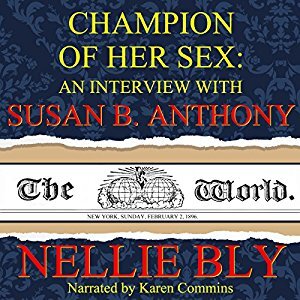
If you know the date of a historical event, you can find newspapers that covered it. You could create an anthology of stories related to the same event.
As another idea, you might find stories from a reporter you like and make a compilation of their work or read individual pieces.
Short StoriesIf you have or find a favorite author, their Wikipedia page or fan web sites might list their short stories.
I Googled short stories in the public domain and saw a number of interesting results, including Library of Short Stories. The site’s creator Evan C. Lewis, who is a short story writer himself, has formatted and categorized 1000s of short stories in the Australian Public Domain. Be aware that Australia’s laws are different from the US, so I would research the copyright status for any story on this site that I might perform.
You can also find short stories on Gutenberg.org and The Public Domain Review. Each of these links points to short stories on the site.
I like to search HathiTrust.org for all my Public Domain works because it’s a consortium of college libraries where Google has scanned their holdings. You can search for “short stories” and change the Collection to either Title or Subject.
I suggest you use the Advanced search as it will let you specify years and the language.
This comment has more info about Advanced search. This one explains how to download a book from their collection. If you’re a member of NarratorsRoadmap.com, I will be glad to download a HathiTrust book for you.
NarratorsRoadmap.com members also have access to my hand-curated collection of short stories on HathiTrust.org.
As with newspaper stories, you can create your own collection. You might build it around a theme using works from different authors or a compendium of a single author’s work.
Public Domain newspapers and short stories could be published as an audiobook or a podcast. You could excerpt some words to illustrate graphics you share on social media. You’re only limited by your imagination how you might utilize these Public Domain works!
The post Finding Newspapers and Short Stories in the Public Domain appeared first on Karen Commins.
April 3, 2025
What’s an industry-standard offer for audio rights?
I received an email this week from a narrator who is considering making an offer to license the audio rights of a book. They asked me what an industry-standard offer would be.
It seems like a simple question, but it doesn’t have a simple answer.
In 2008 when I first wrote about licensing audio rights, audiobooks were not the mainstream entertainment and hot commodity that they have become. Most books were not produced in audio at that time. A literary agent suggested to me back then that an advance of $1000 might seal the deal.
Even though audio licensing deals are routine these days, an “industry-standard” offer for audio rights still doesn’t exist. It really depends on the skill of the negotiator, the book, the rights holder’s approach, and any competing offers.
As a narrator hoping to persuade a rights holder that you should record their book, you have 3 options to suggest and negotiate with the audio rights holder:
Per Finished Hour (PFH)Royalty Share (RS)LicensingYou must be clear which option you are pursuing and the outcome that you want to achieve BEFORE you contact the rights holder!
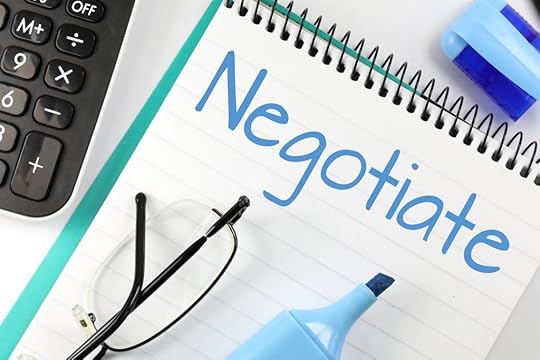
With a Per Finished Hour (PFH) rate, the audio rights holder is simply another client who pays you to narrate — and possibly produce, as on ACX — the finished audiobook. Your payment, responsibilities, and involvement with the audiobook end once you submit the recordings and are paid for the agreed-upon work.
Royalty SharePros:
You don’t incur the upfront cost of an advance.Your risk for low or no sales can be mitigated if the rights holder will pay some or all of your production costs, e.g., with a Royalty Share+ contract on ACX.The rights holder has a vested interest in marketing the audiobook, which is not saying that they actually will do any marketing, though. If they use ACX, they would supply the cover art.Cons:
If you perform the work through ACX, the rights holder would own your audio after 7 years and could re-use and -sell it without any further compensation to you unless you negotiate a buy-out before the 7-year term ends.LicensingPros:
You own the copyright to your audio and your actual recordings forever.You can negotiate the licensing agreement to automatically extend each year unless either party chooses to cancel it.You have the potential to make the most money over time. You would not pay any royalties until any advance that you paid the rights holder earns out.Cons:
You have greater up-front expense if you must pay an advance, which means it will take longer to recoup costs and start showing a profit.An advance exacerbates your risk for low or no audiobook sales.You as the publisher are responsible for choosing the audiobook’s distribution, as well as providing the cover and all marketing of the audiobook.You must account for the sales and royalties due the rights holder every 6-12 months, depending on the terms of your agreement. You may wish to hire an accountant to perform these tasks, especially if you license more than one title.The rights holder might shop the book around to other potential producers once you’ve shown interest in it.Licensing Considerations
Once you decide you want to license the audio rights, the first thing you need to do before approaching a rights holder is figure out how you expect to distribute the audiobook. You’ll want to include that information in your offer. The RH will want to see that you have a solid distribution plan so they have a greater comfort level in your ability to get the audiobook to market.
Next, you need to determine what your top amount for an advance would be. An advance means you pay money upfront on the royalties you expect to earn. You’re advancing the RH the percentage they’re entitled to earn on each sale. You then wouldn’t pay the RH any additional royalties until you have recouped the advance in your royalties from sales.
The higher the advance, the more copies of the audiobook you must sell in order to earn back that money and enjoy a profit.
I would not make my first offer be my best, only offer. For instance, if I was willing to pay an advance up to $1,000, I would start with an offer of much less, say from $0 to $250. I would adjust my offer based on the response received from the rights holder.
I’d want to pay a low percentage of royalties. I’d offer from 15-25% of the royalties I earn to be paid to the rights holder once any advance earns out.
I would also ask for usage of the same cover art and to have a licensing term as long as possible — at least 10 years. You may discover that the rights holder may not own the rights to the cover art, in which case you would need to supply your own.
You may adjust your offer more than once as you negotiate the details with the rights holder.
Other resources on this topic:If you’re interested in learning more detailed info about licensing audio rights, I hosted a webinar with IP attorney and Grammy-winning audiobook director Jessica Kaye. The 1.5-hour recording, transcript, and sample licensing contract are available on my Shop page . Jessica’s #1 rule about licensing negotiations bears repeating here: never fall so in love with a project that you can’t walk away from it.Members of the Audio Publishers Association can view the 9/15/21 webinar Audiobook Rights and How They Are Changing by logging in to the APA site , then clicking Resources, then Webinars. The speakers gave pointers for estimating a book’s revenue.Members of my NarratorsRoadmap.com site have access to my exclusive Audiobook Distributors Comparison Chart , which compares 6 popular distributors across 22 criteria.
Image: Negotiate by Nick Youngson CC BY-SA 3.0 Pix4free.org
The post What’s an industry-standard offer for audio rights? appeared first on Karen Commins.
December 7, 2024
Year-end Organization
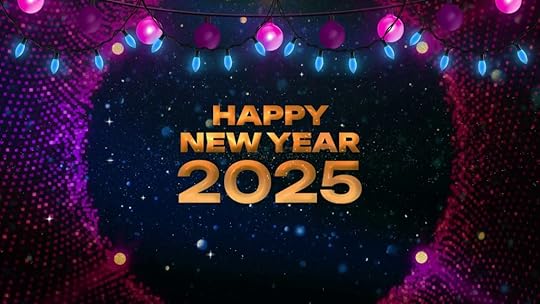
Since we’re fast approaching the end of 2024, I thought it might be helpful to share my activities to organize and prepare for the start of a new year.
I have an Evernote that lists all these tasks. The note has a reminder for 31 December, so I’ll be sure to do these things before 1 January.
Copyright Dates
I don’t always remember how to change the copyright dates for my WordPress sites. I therefore include the location on my template.
Action: Change the copyright dates on my sites, my email templates, and in a number of my articles.
KarenCommins.comUpdate copyright date in the footer under CP Templates.Update copyright date in the author bio under Users.Change the date for works in the public domain in at least 7 articles enumerated in my Evernote template.MailchimpChange year in newsletter template heading.Change newsletter template copyright date in footer.NarratorsRoadmap.comUpdate copyright date in the footer under CP Templates.In Create Your Own Path course resources, change next year in the Years heading under HathiTrust collections and Goodreads list of bestsellers to incoming year.Add my new year’s Hathitrust collection of hand-curated books in public domain (a task that runs into the first few weeks of January).EmailI pay all of my expenses — business and personal — on separate credit cards for each purpose. The receipts arrive in email, and I need to store them for tax purposes.
Action: Create new Gmail folders for each new year’s income and expenses, and move current year folders to archives.
I have Year Income and Year Bills Paid folders going back to 2009!You only need to keep 7 years of documentation for tax purposes. One of these days, I’ll probably delete the archives I no longer need.
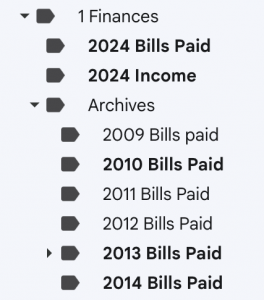
I created Gmail filters using these instructions to automatically process the recurring receipts as they arrive, which saves me time through the year. I use Gmail, but you can set a rule or filter in any email application.
Action: Edit Gmail filters that divert recurring receipts to current-year income and expense folders to new year’s folders.
In this example, my Gmail filter matches any message with the Subject “Receipt for your Marketplace membership fee” and puts it in my 2024 Bills Paid folder instead of my Inbox. I’ll update this rule so that these receipts next year are filed in my 2025 Bills Paid folder.

Evernote underpins everything I do! Naturally, my year-end transition includes a few operations inside Evernote.
Action: Set up new book/audiobook notes, and change year in my notes for my newsletters.
Create Evernotes in Frequent Use notebook for new year’s Books Read / DNF and Audiobooks Heard /DNF lists.Move current year’s Books Read /DNF and Audiobooks Heard /DNF lists to Books Read and Audiobooks Heard notebooks.Change year in newsletter templates in the Mailchimp newsletter note.FinancesI maintain a spreadsheet workbook to track income by source, expenses, domain renewals, and more. At any given point in the year, I know my income, expenses, and profit or loss. It will also generate a table of expense categories, which I use when filling out my Schedule C on my tax return.
I’m creating a template version of it and an instructional video that will soon be available in the NarratorsRoadmap.com Videos.
Action: Copy financial spreadsheet for new year to retain formulas, and clear cells in new file.
Graphics
AudioFile Magazine often has asked narrators to submit their last sentence recorded for the year. Even if that’s not the case, I might make a beautiful graphic of my last sentence that I can share on social media, such as this example:
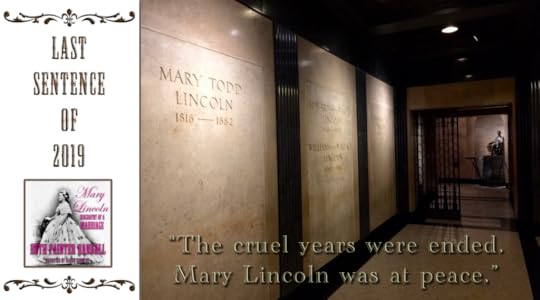 Harp
HarpIn addition to writing in a journal how I spent each practice session, I also track my practice time in a spreadsheet. It helps me to keep my playing streak alive and motivates me to spend more time at my harp.
Action: Copy harp practice spreadsheet for new year to retain formulas, and clear cells in new file.
I encourage you to create your own template of year-end tasks in whatever form you find most useful. It can be in a digital product like Evernote, in a physical notebook, or even a note paper clipped in your planner. You can set a reminder on your digital calendar.
The key is to make your year-end prep a system that is easy for you to find and follow each year.
Happy new year, and best wishes for your continued health, prosperity, and success in 2025!
The post Year-end Organization appeared first on Karen Commins.
June 5, 2024
Living with No Regrets
A few days ago, I happened to see this tweet from @CeliaBedelia:
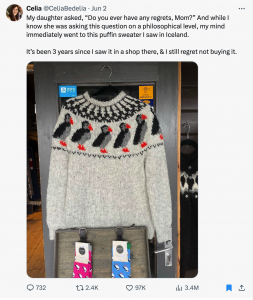
My daughter asked, “Do you ever have any regrets, Mom?” And while I know she was asking this question on a philosophical level, my mind immediately went to this puffin sweater I saw in Iceland. It’s been 3 years since I saw it in a shop there, & I still regret not buying it.
Her comment struck a chord with the Twitterverse. Her post received hundreds of replies about similar missed shopping opportunities and garnered thousands of likes.
I have my own story about the same sort of regret, along with some ideas about living with no regrets.
On Saturday 5 March 1994, we were in Munich, Germany. I wrote in my journal:
I actually saw a poster advertising Barry’s European tour and his date in Munich. I looked around to see if I could find one pasted on a wall that I could steal! (Don’t judge me!) The one I saw was in a store window. Since the tour is postponed indefinitely, I may try to go back to the store (if I can remember where it is!) and try to buy that poster.
Alas, it was not meant to be. After touring Neuschwanstein Castle the next day, I wrote:
Once we got back to Munich, we walked up the Marienplatz trying to find the Barry tour poster. Either my memory is failing, or I just saw an overwhelming amount of stuff yesterday. In any case, we couldn’t find it again (sob).
I always regretted that I didn’t go in that music store and try to buy that poster when I was standing there! I looked for the poster for years to no avail.
On 15 February, I decided I’d finally put this remorse out of my life. Somebody in Germany had an eBay listing for the Hamburg poster in that long-canceled 1994 tour. Since I never found the one for Munich, I thought Hamburg would be close enough. I bought that poster!
In the glorious perfection of the Universe, 3 days shy of the 30th anniversary of my original sighting in Munich, the poster arrived at my house! It was in almost mint condition, as if it had been waiting for me for 3 decades.
I had it framed, and I can say without any bias that it looks spectacular! I hung it in my craft room with my other framed Manilow art. To be clear, when I say “I hung it”, I mean “Drew did the work while I watched!” We had to re-arrange that whole wall and move one of my other pieces to accommodate this new addition.
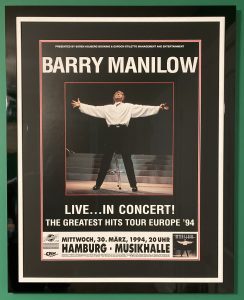
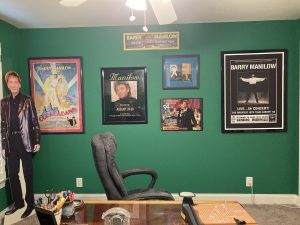
5 Ways to Live With No Regrets
I’m not sure it’s actually possible for me to be completely free of regrets. However, I’ve found these rules help me minimize and eliminate them:
1. When shopping, the time to buy it is when you see it.
One of the respondents to Celia’s tweet included a picture of a store interior in which the owner displayed a sign that read “Nothing haunts us like the things we didn’t buy.” Given the overwhelming responses to her tweet, I think it’s true!
2. The corollary to the first rule is “If I have it, I’ll find a place for it.”
Almost always, the thing in question would be an impulsive purchase. I used to talk myself out of buying things because I didn’t know where I’ll put it. Repeating this tenet out loud helps me know whether the item truly has lasting appeal and needs to be in my life or would be quickly forgotten if I walked away from it.
3. To quote my favorite line from Gone With the Wind: “Askin’ ain’t gettin'”, to which I always add: “If you don’t ask, you don’t get!”
You’ll never know what will happen unless you ask for what you want. You might be turned down. You might be ignored. But what if you get the answer that changes everything?!
This principle is very important in the Law of Attraction. You have to be very clear about what you WANT and ask the Universe for it or something better.
Sometimes it’s hard to have the courage to ask, which leads to the next guideline.
4. Feel the fear, and do it anyway.
Susan Jeffers wrote an excellent book with that title that I found to be helpful when I read it years ago.
Resistance shows up in many ways, with the leading method being some type of fear. I don’t necessarily mean some big fear like the loss of a home or relationship. I’m talking about little — and possibly also irrational — fears, like worrying what someone will think about me or being afraid to audition for an audiobook because I might feel overwhelmed with the workload if I were cast for it.
I have to push all those types of thoughts aside and just DO whatever is in front of me.
5. Be kind and compassionate to myself and remind myself that I’m doing the best I can each day.
This rule is the most important and the most difficult to implement. I’m not always successful at it.
It’s all too easy to fall in the trap of “could have/should have”, which can lead to a downward spiral of negative thinking. Continuing to blame or criticize myself for my (in)action in some past situation doesn’t change the situation or help me feel better about the outcome. It only keeps me stuck and not living my best life in the present moment.
Do you have a shopping sorrow or a way to combat regrets? I hope you’ll share it in the comments!
The post Living with No Regrets appeared first on Karen Commins.
December 16, 2023
Things I’ve Learned About Adding New Entries to My Journals
A few days ago, I showed a narrator friend my collection of journals, which I started keeping consistently in 1999. She was interested in beginning a journal and asked some questions that started me thinking about things I’ve learned about adding new entries to my journals.
I think many people may wish to start a journaling practice at the beginning of the new year. This list, which is no particular order, goes beyond the advice and info I shared in my article How I Use My Journal. I encourage you to read that article, too.
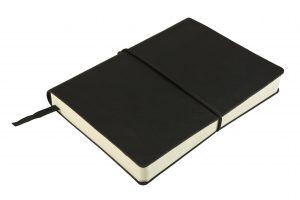
I choose to handwrite my entries because it slows your brain, and your thought process is different.
Number the pages and the books so it’s easy to cross-reference from one book to another.
I date my entries and add the time and my location. My location is usually “sitting on the sofa.” (haha) However, my journal is my constant companion. I’ve written on buses, trains, and planes; in hotel rooms; at cafés; and sitting poolside. I’ll also note whether I’m watching a TV show or listening to music. The TV distracts me from writing, whereas music usually enhances my writing.
I bookmark entries with Post-It Tabs if I wrote about something of significance that I want to easily rediscover. The Tab has enough room for me to write a few words on it with a Sharpie to identify why I marked the page.
Those who know me won’t be surprised that I also snap pictures of some entries in Evernote so I always have them available wherever I am. (Shameless plug: If you’d like to learn to use Evernote, I’ve created a video course about it for members of NarratorsRoadmap.com.)
I also create an index in each book. Leuchtturm 1917 books (medium, hard cover, A5 size approximately 8.25″ x 5.75″, plain paper) are my favorite due to their array of cover colors, paper types, and built-in features of numbered pages and index pages. These books have a few preprinted index pages. I usually need to use some blank pages to continue the index.
Leave space after each entry so you can later add things you forgot and/or new, related info/comments.
Change pens and ink colors to suit your mood and make the writing process even more enjoyable. I mainly use fountain pens, rollerballs, and ballpoints. I also have some glitter gel pens that are fun at times. I’ve drawn with colored pencils on some pages. I don’t like to write with pencils, but I suppose they are fine if that’s your choice.
Feel free to type entries on your computer, print them, and affix them to your book pages. Or, you could keep the journal completely digital.
Include different media: pictures; collages; rubber-stamped images; ephemera like business cards, tickets, name tags, receipts, vacation itineraries, cruise newsletter clippings, and anything else that interests you. Your journal is a playground for your creativity!
You have complete freedom to write as much or as little as you want as (in)frequently as you want. I write everyday. Some days I’m expansive and write what I’m thinking and recount conversations I had. Some days I write quick bullet points of things that happened that day and/or to-do lists for the coming days. Some days I mix both styles.
Your journal can be part scrapbook. I include pictures of audiobook cover art and AudioFile Magazine reviews. When I’ve designed an ad or a postcard, I usually include a copy in my journal.
Rather than maintaining a separate commonplace book of quotes, I copy them into a day’s entry. I seem to remember things I’ve written better than things I’ve typed. Quotes can come from anywhere — articles, books, social media posts, and even texts.
You’re not limited to 1 journal! For instance, I maintain a separate book for my harp practice notes. I’ve written answers to journal prompts in their own books. I ordered one of Seth Godin’s Ship It Journals when I was designing NarratorsRoadmap.com.
Write whenever you feel like it. I usually write in the evenings before bed, but I will write at other times, too. I often write in my journal for a bit if I’m feeling stuck at work or annoyed at something. I can let off steam in my journal and refocus my mind on the task at hand.
I hope these thoughts are helpful to you in starting or rejuvenating your journaling practice.
I am so convinced about the power of a journal to help you live your best life that I want to send a special book to 5 of you as a new year’s gift! The first 5 people who send me their mailing address by email before 31 December will receive a journal book with a beautiful cover that relates to audiobook narration. To be eligible, you must supply your mailing address in email, not a comment on this post or sent via social media like Facebook Messenger. I will send out the 5 journal books using USPS Media Mail sometime after I return to work in January.
The post Things I’ve Learned About Adding New Entries to My Journals appeared first on Karen Commins.
September 25, 2023
How to Narrate Copyrighted Books
I received this comment on my article Public Domain Narration Headquarters. Since the question involves a book still under copyright, I decided to create a new article, redacting some of the identifiable aspects of the message.
I would love to record a memoir by a great [person]. Once recorded, I think there would be a market for it. The book was published in 2002, therefore is not public domain. It’s sold by Amazon but there is no audiobook of it.
I know I’ll have to contact the publisher but I don’t know where to go from there. I don’t know how to set up a contract for the job (I’d be willing to do royalty share). I don’t know how to get the audiobook onto Amazon and Audible so people can buy it.
I’ve recorded more than X books, mostly for Learning Ally. I have a good home studio. I got two jobs from [a Big 5 publisher] but have not been having much luck with auditions of late. My work of late has focused on [certain]-themed books. I haven’t figured out Findaway or Spoken Realms. I’m getting my business education from you and APA but there’s a lot I need to learn. Any advice you can give will be appreciated.
Thanks for the note.
First, this article may seem more of a general answer than you’d hoped. It needs to benefit the most people. Obviously, each discussion and negotiation about audio rights and audiobook production will be unique. I can’t anticipate or explain every possible scenario, and the scope of the topic is beyond what I can cover in an article. I can only give you a basic game plan and some resources.
Second, I need to state a few general facts about copyright so we’re all on the same page:
The audio rights holder (RH) could be the author, literary agent, or publisher.Every book published in the US after 1963 remains copyrighted. Only the audio rights holder has the legal right to make an audiobook of these titles.Titles published in the US before 1928 are in the public domain. Anyone can make an audiobook of these books without obtaining any permission or paying any licensing or royalties. A new year of books enters the public domain every 1 January, meaning that books published in 1928 will be public domain on 1/1/24.Books published in the US between 1928 and 1964 may be public domain or could still retain copyright.You must research the publication and copyright renewal dates to determine a book’s copyright status, and, if it is still copyrighted, the rights holder. If it’s public domain, head over to my Public Domain Narration Headquarters for more info and resources.
This article concerns only those books still in copyright.
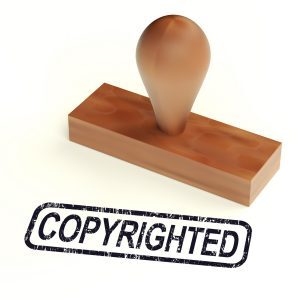
Before I continue, let me state that anyone who plans to approach a rights holder about narrating their book needs to already be experienced in recording audio files and having them proofed and mastered.
Your chances of success are further helped if you have completed projects for RHs through a distributor platform (ACX, Findaway, Spoken Realms, Author’s Republic, etc.) or directly with publishers or production companies. You also will want to be knowledgeable about audiobook distribution and have a distribution plan ready for books you wish to license.
You can narrate a copyrighted book in 1 of these 2 ways:
License the audio rightsusually requires an advance payment against projected royalties — the amount is a negotiation pointlicensee is responsible for cover art, distribution choices, and marketingPersuade the rights holder to retain their audio rights and hire you to narrate/produce the audiobookThis option intuitively seems easier to pursue with authors if you are willing to be paid by royalty share or possibly a royalty share hybrid where you receive an amount less than your PFH rate up front to cover your production costs.It’s important to know how you plan and expect to create the audiobook BEFORE you contact someone about audiobook production for several reasons:.
A publisher may not license titles to an individual. You might need to partner with a production company.If you want to license the title, the rights holder needs to know you have experience producing audiobooks and have created a distribution plan.An author may not be interested in managing the process and only wants to license the rights.Authors who want to produce the audiobook may need guidance from you about the whole process, particularly distribution options.I’m not trying to sell you anything, but I hosted a webinar about licensing audio rights with Jessica Kaye. Jessica is an IP attorney and Grammy-winning audiobook director and distributor. If you’re interested, the replay with transcript and sample contract are available on my Shop page.
Also, this is a good place to point out that members of my NarratorsRoadmap.com site have access to my exclusive Audiobook Distributors Comparison Chart in which I list over 20 attributes for 6 distributors and share my distributor recommendations.
Discover Rights HolderIn either case, you’d start by determining who owns the audio rights so you can send them a query.
I like to begin my quest with the author or literary agent as I usually receive a faster response.
In this case, the author has passed away. I therefore suggest starting the query with the publisher rather than researching the author’s estate.
I look up the book on Amazon and find the publisher’s name listed in the Product Details section of the page. You might also find it by using the Look Inside feature if that’s available for the book. Be sure to look at the hardback and paperback versions; the Kindle edition may have been published by an entity that isn’t the original book publisher.
If the book isn’t listed on Amazon, you can Google the title
I then Google the publisher’s name to see if they have a web site.
You usually want to connect with someone in the Subsidiary Rights department. You can look through the publisher’s site to find that department.
I don’t like writing messages to general email addresses like info@publishername.com. I use a Google site search on LinkedIn to see if I can find an employee in Subsidiary Rights.
site:LinkedIn.com PublisherName.com subsidiary rights
If a name pops up, I’ll review their LinkedIn profile to ensure that they currently work with the publisher in the sub-rights department. Many times, a past job matches my search, and I don’t want to waste time writing to the wrong person.
With the particular book mentioned in the message, I couldn’t find anyone on LinkedIn for the publisher’s sub-rights. However, this publisher has an easily-discoverable site with a menu option for Staff. None of the descriptions included the word “rights”, so I’d write to either the Production Manager or the Executive Editor.
Find Contact InfoOnce you have a name, you’ll need their email address.
Here are 4 tactics that may help you to discover the email address for a person:
Google one or more of these search terms:[name] + email address[name] + contactsite:[DomainName.com] + [name] + contact, where DomainName.com is the website URLEnter the website domain name at Hunter.io . It will return a list of verified email addresses at that domain. You can search the results for the person you want to contact. If that person’s name isn’t listed in the results, you can use the “best guess” for the format of the email address.Look on social media for their account and simply ask them for their email address.Facebook users also may list their email address in the About section of their profile.Send Initial QueryIf you’re writing to the author, I suggest you do some additional research before contacting them:
Read the book, or at least read the Kindle sample.Do your homework and look at the author’s site and social media. Follow authors on social media and comment between releases. If they talk about a new project, you might contact them about it.Your research will uncover specifics that will appeal to the author and help you make this initial query more personal and effective.In addition, if the author already has some books in audio:
You wouldn’t need to include comments in your query about the booming audiobook business. They already know!Check the narrators of the audiobooks. If the author only uses 1 narrator, don’t be a poacher! Find another book and author to contact.NarratorsRoadmap.com members have additional resources available regarding author prospecting in the Create Your Own Path video course.
You might want to review my points of email marketing advice before firing off a message.
Your query should be brief — 50-125 words seems to be the sweet spot. You might compose the message on your phone to ensure it stays on a single screen. You can use the following elements:
Confirm that the person you’ve contacted does indeed control the audio rights for the book.Ask whether they already have plans to create an audiobook.Explain your interest in/connection to the book.Succinctly mention the tremendous and continuous growth in the audiobook market.State your background to give the RH confidence in your ability to produce the audiobook.Request a reply.Don’t Send a SampleMany people send a sample from the book with the initial query to authors, and it’s a winning tactic for some.
For me, sending the book sample with the query is putting the cart before the horse. I’d wait to see if the person expresses interest before I spend time creating a sample.
You’re trying to start a relationship. A sample can feel pushy to the author — like you meet someone on a date and tell them you know all about them, want to build a house with them, and have already picked out the wallpaper!
When you include a sample, send it as a link rather than an attachment to the message.
Respond As AppropriateIf you don’t get a response within 2-3 weeks, I’d send another message. Be prepared to follow-up many times before you have a decision, especially if you’re communicating with someone at a large corporation.
You may need to negotiate the licensing terms.
If you want the RH to hire you, you may need to answer their (possibly many) questions about audiobook production, including things like how they can post the book on ACX and choose you as the narrator.
Produce and Distribute the AudiobookOnce you get a YES, you would sign appropriate contracts.
If you need a contract template in a work-for-hire situation, you can download one from ACX on this page. You can modify the Narration Services contract template to suit your circumstances, starting with removing “ACX” from its pages. Licensing the audio rights requires a different contract for which I suggest you consult with an attorney.
With a contract in place, you would record and produce the audiobook as you’ve done for other clients.
The steps to make the audiobook appear on Audible and other sites depends on which distributor(s) are chosen. If the author hired you, they select the distributor(s). If you’re the audio licensee, you would follow the distribution plan you devised earlier.
Basically, each distributor has its own method of intake for audio files and cover art. With many sites, you simply create an account, supply tax info, login, and upload the files. Note that on ACX and Findaway Voices, you as an audio licensee would use a different email address than your narrator address to create a rights holder account. (Your 2 accounts can use the same tax ID.) Other distributors may require a different means to establish an account and transfer files.
Those who license the rights are responsible for marketing the audiobook. My Audiobook Marketing Cheat Sheet has a wide range of ideas and tactics to help you promote your audiobook.
I hope this overview helps. If you have questions about this article or next steps, please leave a comment below. Good luck in obtaining this book, and please keep me posted so I can cheer you on!
Photo: Storyblocks.com
The post How to Narrate Copyrighted Books appeared first on Karen Commins.
March 9, 2023
Art, Blurbs, and Critics for PD Books
I want to share a few ideas to help you promote your public domain audiobooks with interesting pull quotes from critics’ reviews, publisher marketing text in your descriptive blurbs, and authentic cover art.
Critical ReviewsWhen you fill out the info about your book with your distributor, you’ll generally see a space to enter quotes about the book. With a little research, you may find some excellent reviews of your book from which you can pull quotes. You can see an example of Critic Reviews on my Audible listing for Ida Tarbell’s autobiography All in the Day’s Work.
I use these Google search terms at NYTimes.com and KirkusReviews.com, filling in those URLS where I show sitename.com below:
Site:sitename.com book title review
Site:sitename.com book title author name
With the site: command, Google searches the entire site and shows those pages with my search terms. Usually, anything about a public domain book in the New York Times would be on their Timesmachine site, which has images of every issue from 1851 through 2002. I use a link for the New York Times from my library to read any page on their current or Timesmachine sites and capture any screen shots I need.
BlurbsReading how the publisher originally described the book to buyers is very useful. For this exercise, I query the Publishers Weekly archive which is available to its subscribers. I no longer have access to PW through my library and instead have bought my own subscription for several years. The archive includes almost 150 years of issues with every ad and review in place!
I recently produced, narrated, and published the audiobook of The White Flower by Grace Livingston Hill. The book was originally published in 1927 and became public domain on 1 January 2023.
I searched Publishers Weekly. I didn’t see any reviews for this book, but I did find 2 publisher ads for it. The left one appeared on 24 September 1927, and the one on the right was in the 1 October 1927 issue.
You can click on either one to enlarge them. The one on the right from 10/1/1927 has more description. I used part of the publisher’s text when writing my own!
Cover ArtInspiration for cover art comes from many places. In the case of The White Flower, I’m thrilled to report that I am using the original artwork shown in the 1927 ads!
I found an eBay listing for the book that miraculously still had the dust jacket. As a bonus, the jacket seemed to be in pretty good shape. It cost $15, and the shipping was free. Of course I bought it!
Once the book arrived here, I scanned the cover in my flatbed scanner.
Drew edited the image in Photoshop so that it’s square for the audiobook. He restored the torn edges and re-colored each letter in the title to give it a consistent, bright look. He had to re-do the author’s name in order to make space for mine. We couldn’t find the exact font from the title for the author’s and my bylines, so we used a very similar one. I couldn’t be happier with the result!
This image of the couple hanging on to a caboose platform depicts a pivotal scene in the book. However, I might not have thought about if I had needed to create or hired an artist to create cover art. If I hadn’t been lucky to find a book with that original cover, seeing the original design in the ad would have given me a good angle to pursue.
I hope this info and example spark new trains of thought for you on your next public domain adventure!
The post Art, Blurbs, and Critics for PD Books appeared first on Karen Commins.
February 2, 2023
Revoked Findaway’s License to Apple for Machine Learning
As I wrote in 2021, taking steps to remove the human voice and replace it with a synthesized one destroys the art form.
I certainly do not want or intend to participate in any attempt to create artificial voices meant to replace human narrators.
However, I unknowingly may have done that very thing by choosing to distribute audiobooks through FindawayVoices.com. Today, I took action to revoke Findaway’s license to Apple to use my audiobooks for machine learning.
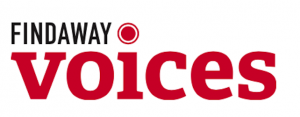
In recent days, people on Facebook have shared this clause in Schedule D of the rights holder’s Distribution Agreement from FindawayVoices.com:
Machine Learning
Rights Holder grants Apple a limited, non-exclusive, non-transferable, non-sublicensable right and license to use Digital Audio Products files for machine learning training and models, provided that in no event shall any Rights Holder Digital Audio Products or portion thereof be provided to any third party or end-user in contravention of this Digital Distribution Agreement (e.g. making Rights Holder content available for free to end-users without express written consent). Rights Holder may revoke this right and license by sending Notice to Findaway as outlined in Section 11.
Section 11 states:
11. NOTICES
All notices required under this Agreement shall be sent by email to support@findawayvoices.com.
I’m a rights holder on Findaway. I sent the email below to FindawayVoices as my Notice. Feel free to use it as a template, though in retrospect, I’d change the subject to be Revoke license for Apple machine learning. I also should have added that my revocation applies to any future similar license with another company. Not surprisingly, the auto-reply message stated they are “experiencing higher than average email volume.”
Subject: Revoke use of Apple machine learning
Hello. I am disgusted to learn that Findaway at some point added language to Schedule D of the Distribution Agreement which allows Apple to use my audio for machine learning.
Per Item 11 of the Agreement, I revoke that right and license forever for all of my audiobooks.
Please send confirmation of this request, as well as confirmation from Apple that my files will not be used in this manner.
Looking at my copies of past Distribution Agreements, I see that this clause has been in place since at least March 2020.
It’s unfortunate that Findaway’s lawyers banked on the fact that most people would not see or understand this treacherous clause in the Agreement.
For a company that proudly proclaims “We Love Narrators” on the home page of FindawayVoices.com, this clause makes it seem that the company loves big money more.
In addition to the royalty break-down listed in the Agreement, Findaway should be transparent about the amount of money that Apple is paying for the right to use your clients’ audio to create synthetic voices that could take the jobs of the narrators Findaway “loves”.
Thank you for your attention and immediate action.
Update: After receiving numerous questions and comments from other narrators, I’ve changed this post to clarify that the “Machine Learning” language only appears in the rights holder’s Distribution Agreement.
I’ve narrated and self-produced a number of books that I distributed through Findaway as the rights holder. I couldn’t find a link to the current Distribution Agreement on the web. It’s contained in my Rights Holder Dashboard.
Narrators sign away our interest in the recording at the point we contracted with a rights holder. You can send the email to Findaway. However, I imagine they would tell you to contact the rights holder(s) of books you’ve narrated to revoke their sub-license to Apple.
The post Revoked Findaway’s License to Apple for Machine Learning appeared first on Karen Commins.

